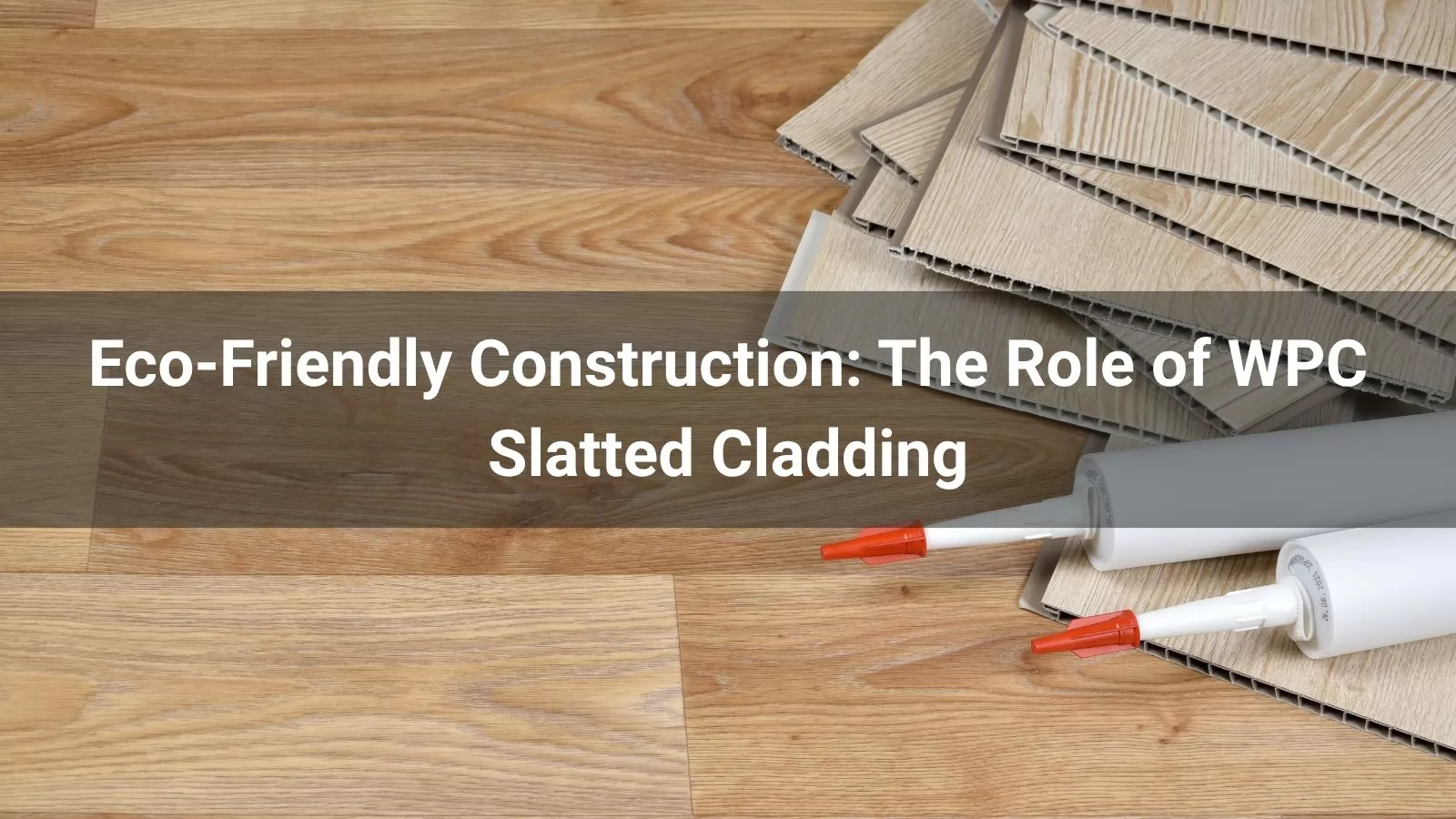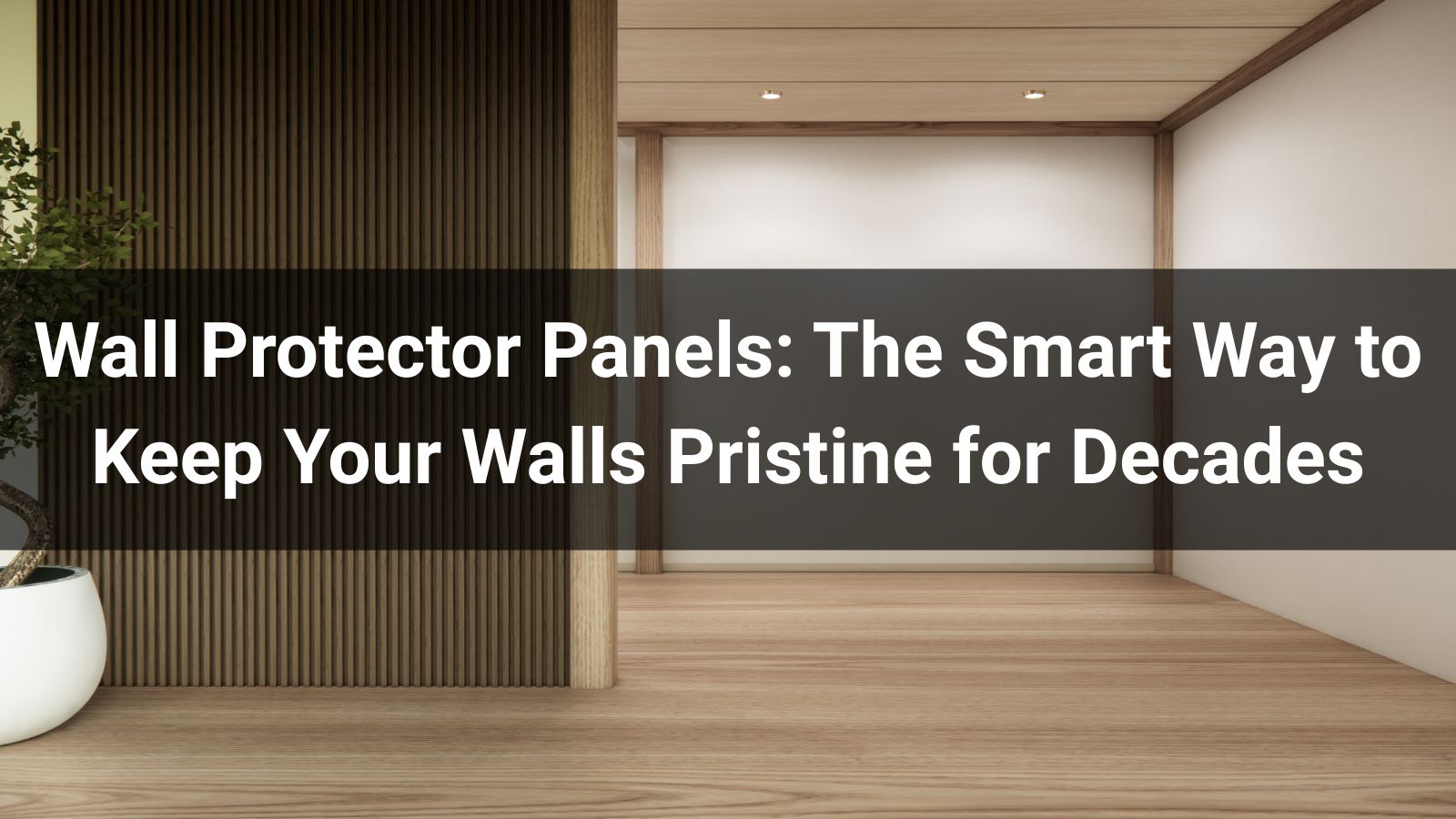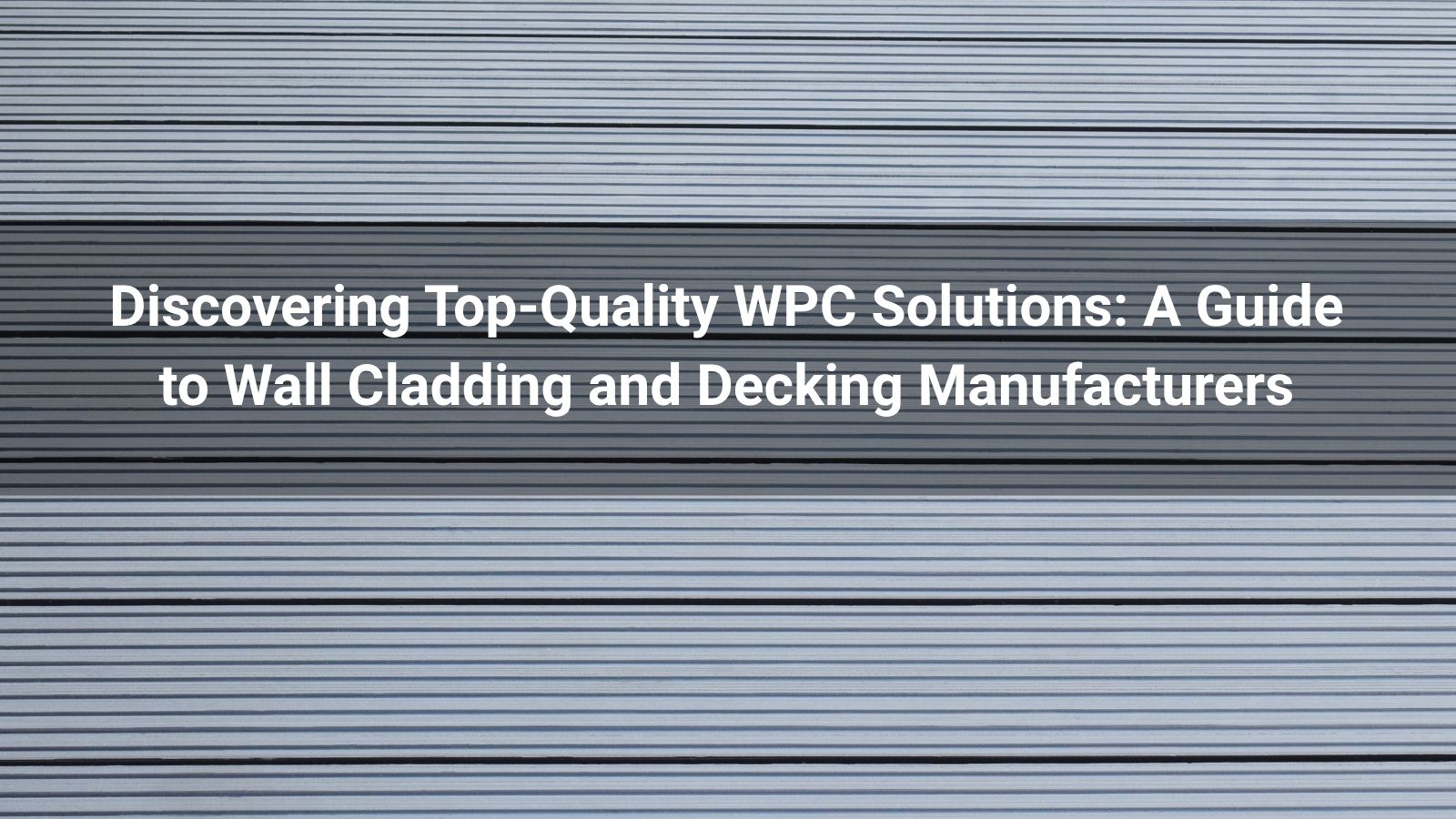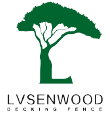

In the rapidly evolving world of eco-friendly construction, Wood Plastic Composite (WPC) slatted cladding is emerging as a transformative solution. Combining sustainability, durability, and aesthetic appeal, WPC slatted cladding offers an innovative alternative to traditional building materials. Companies like LvsenWood, a leading provider of WPC products, are at the forefront of this movement, delivering high-quality cladding that meets the demands of modern, environmentally conscious builders and homeowners. This article explores the multifaceted benefits of WPC slatted cladding, its applications, and its role in shaping the future of sustainable construction.
WPC slatted cladding is a standout in eco-friendly construction due to its composition of recycled wood fibers and plastic polymers, typically high-density polyethylene (HDPE). This blend significantly reduces the need for virgin timber, helping to preserve forests and mitigate deforestation. For instance, LvsenWood’s WPC slatted cladding is crafted from up to 60% recycled wood fibers and 30% recycled plastic, with the remaining 10% consisting of additives like UV stabilizers to enhance durability. By repurposing materials that would otherwise end up in landfills, WPC cladding contributes to a circular economy, reducing waste and lowering the carbon footprint of construction projects.
Moreover, the production process for WPC cladding is notably energy-efficient. Compared to traditional materials like timber or vinyl, WPC requires up to 32% less energy during manufacturing, according to a 2010 study by the University of Michigan. This efficiency, combined with the use of recycled materials, positions WPC as a cornerstone of sustainable building practices. Additionally, WPC cladding is fully recyclable at the end of its lifecycle, further enhancing its environmental credentials.
One of the most compelling aspects of WPC slatted cladding is its affordability. Despite its advanced technology and eco-friendly properties, WPC remains competitively priced, making it accessible to a wide range of budgets. LvsenWood, for example, offers a variety of WPC slatted cladding options, from conventional to co-extruded models, ensuring that eco-conscious builders and homeowners can find cost-effective solutions without compromising quality. The long-term savings are equally significant, as WPC cladding requires minimal maintenance—no painting, staining, or sealing—unlike traditional timber, which incurs ongoing upkeep costs.
The initial investment in WPC cladding is often offset by its durability and low maintenance needs. With warranties ranging from 5 to 15 years for LvsenWood’s products, depending on the series, homeowners and builders can trust in the longevity of their investment. This combination of affordability and durability makes WPC slatted cladding an attractive option for both residential and commercial projects.
WPC wall panels, such as those offered by LvsenWood, are revolutionizing the construction industry with their eco-friendly composition and robust performance. These panels are made from the same recycled wood and plastic blend as WPC cladding, offering a sustainable alternative to traditional wall materials like timber or drywall. Their durability and low-maintenance nature make them ideal for a variety of applications, from residential interiors to commercial facades.
WPC wall panels also contribute to energy efficiency. Their thermal insulation properties help regulate indoor temperatures, reducing heating and cooling costs. For example, LvsenWood’s WPC wall panels are designed to provide insulation, keeping buildings warm in winter and cool in summer, which aligns with the growing demand for energy-efficient construction solutions. Additionally, these panels are resistant to moisture, mold, and mildew, making them suitable for high-humidity environments like bathrooms and kitchens.
The versatility of WPC wood panels is one of their greatest strengths. Available in a range of colors, textures, and finishes, WPC panels can mimic the natural beauty of wood while offering superior durability. LvsenWood’s WPC wood slat panels, for instance, are popular for creating modern, minimalist aesthetics in both interior and exterior spaces. Whether used for exterior cladding, interior accent walls, or decorative elements, WPC panels offer endless design possibilities.
WPC panels can be installed vertically or horizontally, allowing for creative flexibility in architectural design. Their lightweight nature simplifies installation, reducing labor costs and construction time. Furthermore, LvsenWood’s panels are available in 12 colors and can be customized to meet specific project requirements, making them a favorite among architects and designers seeking both functionality and style.
WPC wall solutions are a game-changer for sustainable construction. Made from recycled materials, these walls reduce environmental impact while offering exceptional durability and low maintenance. Unlike traditional timber walls, which are prone to rot and insect damage, WPC walls are resistant to these issues, ensuring a longer lifespan. LvsenWood’s WPC wall solutions, for example, are engineered to withstand harsh weather conditions, including UV exposure, rain, and temperature fluctuations, making them ideal for both indoor and outdoor applications.
The sustainability of WPC walls extends beyond their material composition. Their production process minimizes energy consumption, and their recyclability at the end of their lifecycle further reduces waste. By choosing WPC walls, builders contribute to a greener future while creating structures that are both aesthetically pleasing and practical.
WPC slat panels are particularly appealing for their unique combination of style and sustainability. The slatted design creates a sleek, modern look that complements contemporary architectural trends. LvsenWood’s WPC slat panels, for instance, are celebrated for their UV resistance, ventilation properties, and sound-absorbing qualities, making them ideal for high-end outdoor projects. These panels are not only visually striking but also eco-friendly, as they are made from recycled materials and require minimal upkeep.
The aesthetic versatility of WPC slat panels allows them to be used in a variety of settings, from residential gardens to commercial facades. Their ability to resist fading, warping, and cracking ensures that they maintain their appearance over time, even in challenging environments. This durability, combined with their sustainable composition, makes WPC slat panels a top choice for eco-conscious design.
WPC wall panels designed for outdoor use are engineered to withstand the elements, making them a reliable choice for exterior applications. LvsenWood’s outdoor WPC wall panels are resistant to rot, warping, UV damage, and insect infestation, ensuring they remain pristine for years with minimal maintenance. Unlike traditional timber, which requires regular treatments to prevent decay, WPC panels can be cleaned with simple soapy water, reducing both maintenance costs and environmental impact.
These panels are also highly adaptable to various climates, with LvsenWood’s products tested to endure temperatures ranging from -35°C to 68°C. Their waterproof and anti-corrosive properties make them particularly suitable for humid or coastal environments, where traditional materials often fail. With warranties of up to 15 years, LvsenWood’s outdoor WPC panels offer peace of mind for builders and homeowners alike.
As the construction industry moves toward sustainability, WPC slatted cladding is poised to play a pivotal role. Its eco-friendly composition, affordability, and versatility make it an ideal choice for modern building projects. LvsenWood’s commitment to innovation and quality ensures that their WPC products meet the highest standards of performance and aesthetics, setting a benchmark for the industry.
Beyond its practical benefits, WPC slatted cladding aligns with global sustainability goals, such as the UK’s aim to achieve net-zero carbon emissions by 2050. By reducing reliance on virgin timber, minimizing energy consumption, and promoting recyclability, WPC cladding contributes to a more sustainable built environment. Whether used for exterior facades, interior walls, or decorative elements, WPC products offer a winning combination of style, durability, and environmental responsibility.
By choosing LvsenWood’s WPC slatted cladding, builders and homeowners are not only investing in high-quality materials but also contributing to a greener future. As the demand for eco-friendly construction continues to grow, WPC slatted cladding will undoubtedly remain at the forefront, reshaping the industry and paving the way for a more sustainable tomorrow.











